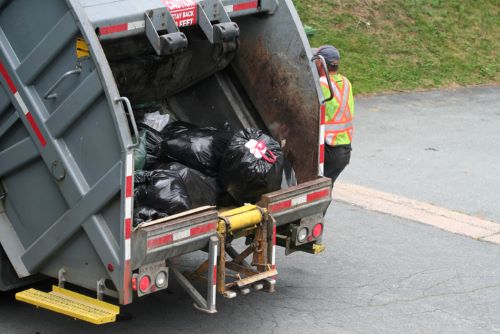Protecting waste management workers
Risk assessments conducted within the Waste Management sector reveal that workers are routinely exposed to physical hazards from having to handle, move, remove, and transport waste material.
According the BLS, the injury rates for workers in 2021 is as follows:
- 4 injury cases per 100 workers in solid waste collection
- 2.2 injury cases per 100 workers in landfills
- 3.2 cases per 100 workers in MRFs
Injuries and illnesses for this sector are trending downward (fortunately), but there still remains a lot of work to do in order to make waste management a truly safe profession

Ensuring safety in the waste management sector
Workers encounter broken glass, razor-sharp metal edges, contaminated needlesticks from household waste and improperly disposed syringes in commercial or retail waste. Equipment malfunctions during maintenance or repair tasks can also cause puncture and laceration injuries.
In order to reduce these identified risks, managers should introduce well-written and thorough procedures and conduct effective training across the workforce. While this alone is unlikely to entirely eliminate hazards for day-to-day tasks, it’s a major step that is part of a larger safety campaign.
Another critical safety measure for preventing injuries is selecting and using the proper PPE. OSHA requires employers to conduct and document a PPE risk assessment to determine the hazards, the likelihood of exposure, and protective/preventative measures through proper PPE and training to ensure a safe work environment and safe practices of employees.
Essential qualities of waste management PPE
Respirators. According to the BLS, respiratory illnesses are the leading cause of illnesses among solid waste and recycling industry workers. This makes high-quality respirators and face masks essential equipment for employees. N95 respirators that can deliver a full face seal are the most recommended, as the protect from both particulates and organic vapors.
Hand protection. As noted above, waste management workers encounter all sorts of detritus that could cause injuries ranging from minor to severe. But sanitary factors (or the lack of) heighten the risks of getting an open wound in such an environment. Workers should therefore be equipped with gloves with high levels of cut and puncture protection. Tasks done in wet conditions or involving fluids should also be waterproof and provide secure grip whether dry or wet.
Protective apparel. The protective apparel should appropriate to the hazards of the task being performed and waste materials being handled. Apparel can range from light-duty protective wear and boots to full-body coveralls with FR or waterproof properties.
Mechanix Wear provides hazard-appropriate PPE
For employers who may need or want assistance to ensure all hazards are identified and addressed, there are options from numerous organizations and companies readily available to help.
Workers in the waste management sector can face different hazards depending on their specific task and the conditions of their workplace. Identifying those hazards is the first step to ensuring workers are protected. Partnering with Mechanix Wear ensures they are protected and productive, wearing PPE that is engineered specifically for the assigned tasks, provide a comfortable and proper fit, and functional to keep workers productive and safe.
Enroll today in the TRACK program and partner with the Mechanix Wear experts so you can benefit from their experience and from their leading-edge solutions that are made for protecting the wearer from hazards.